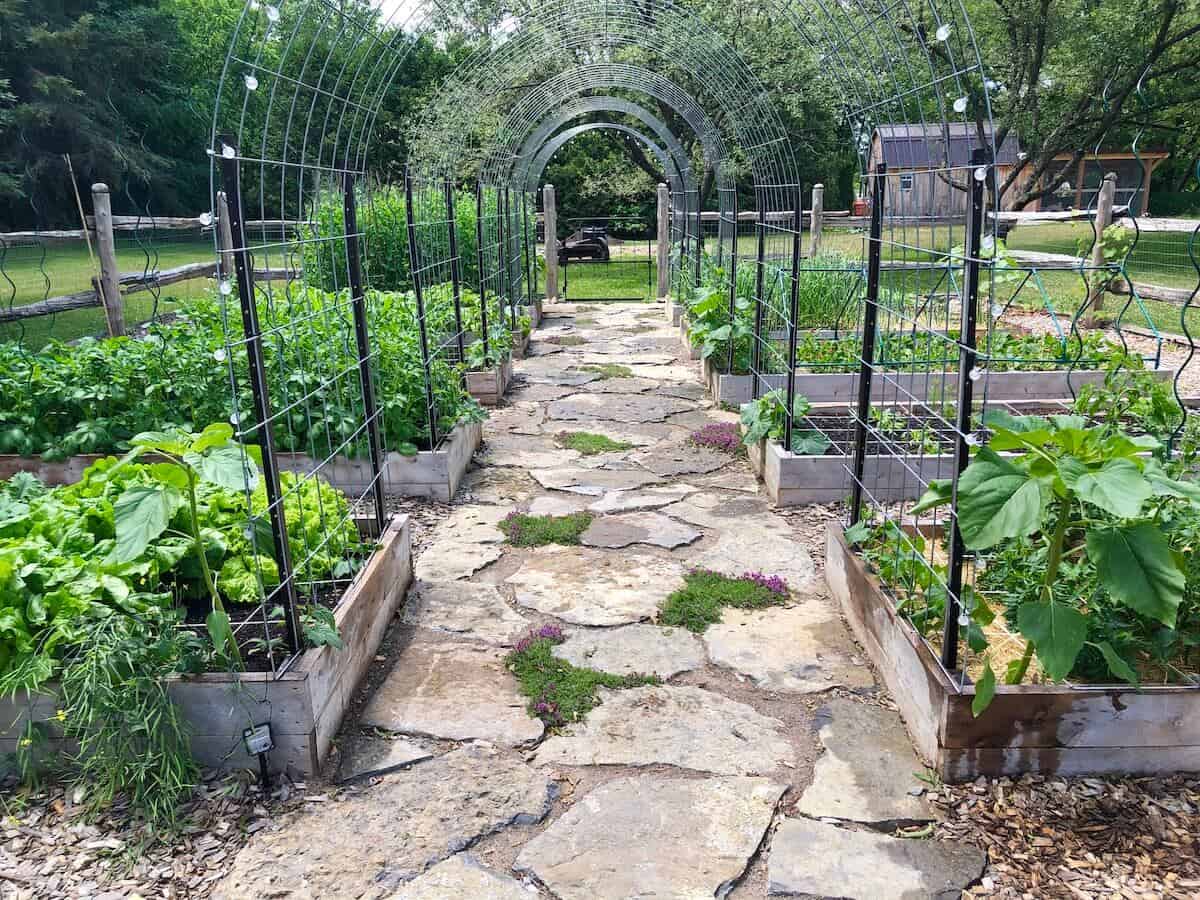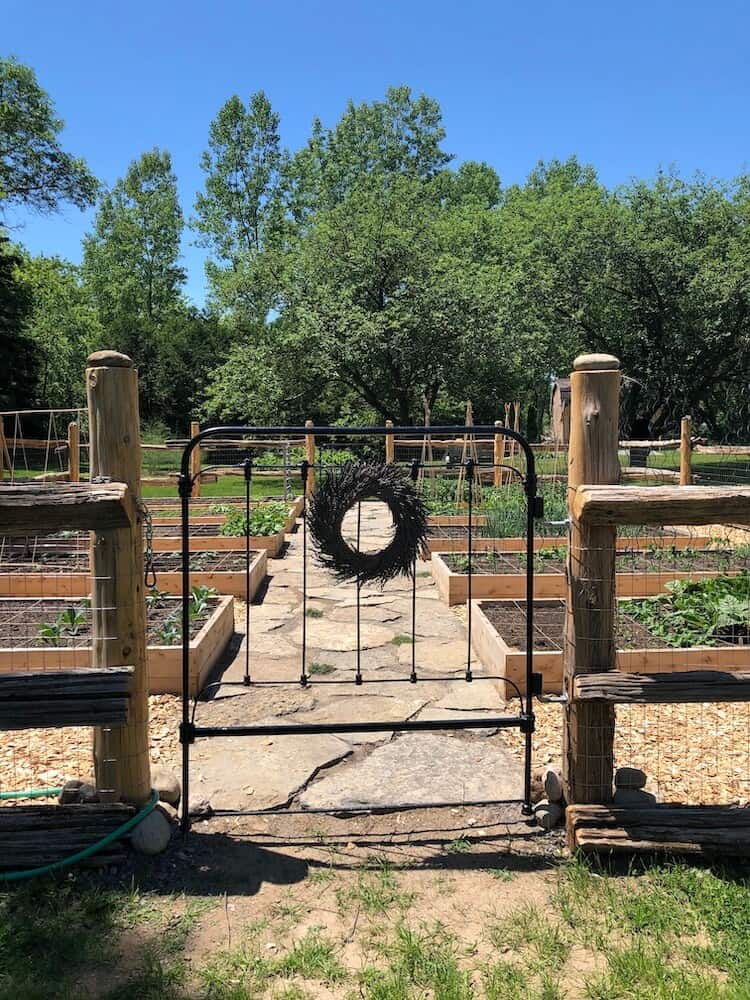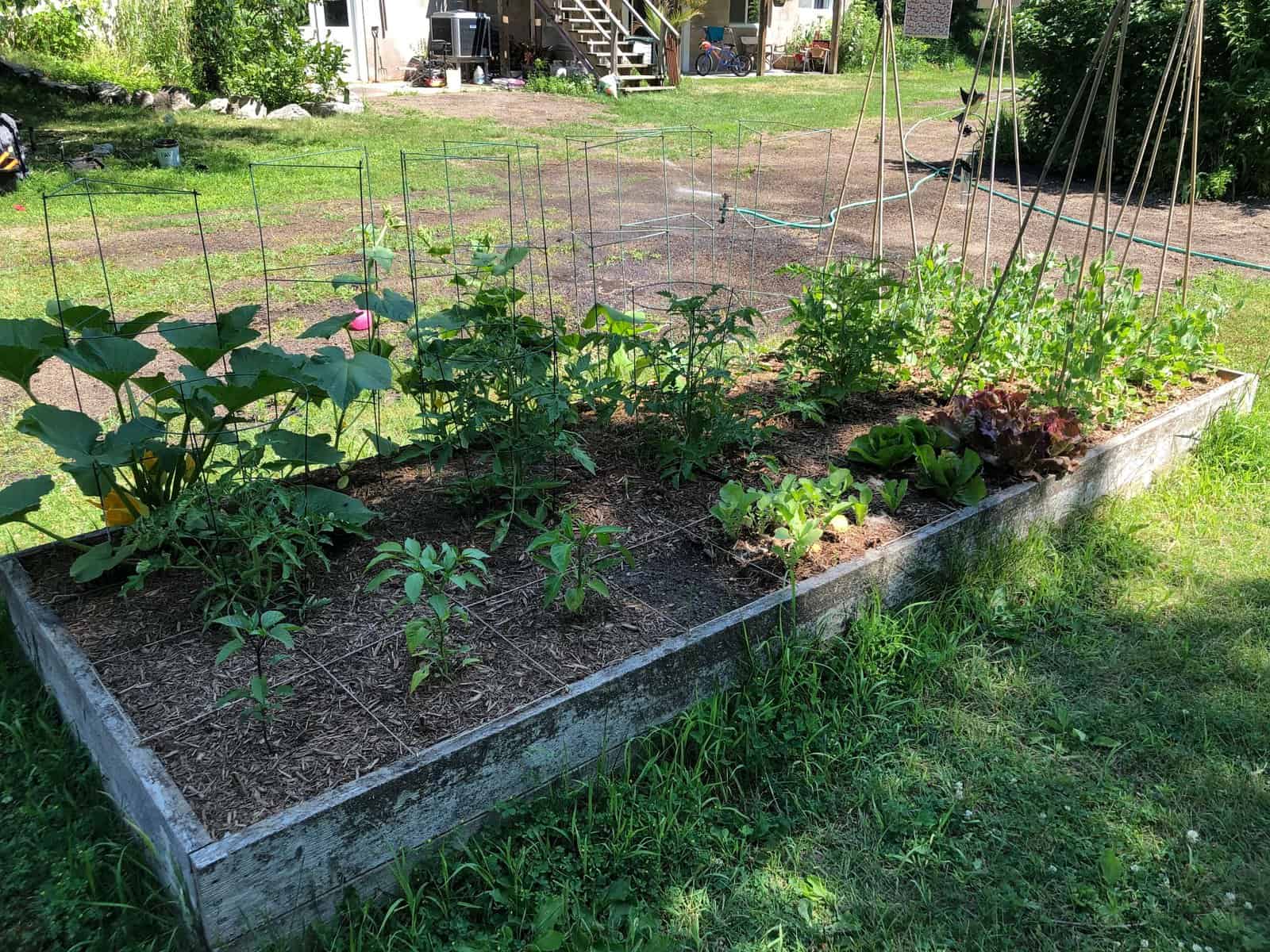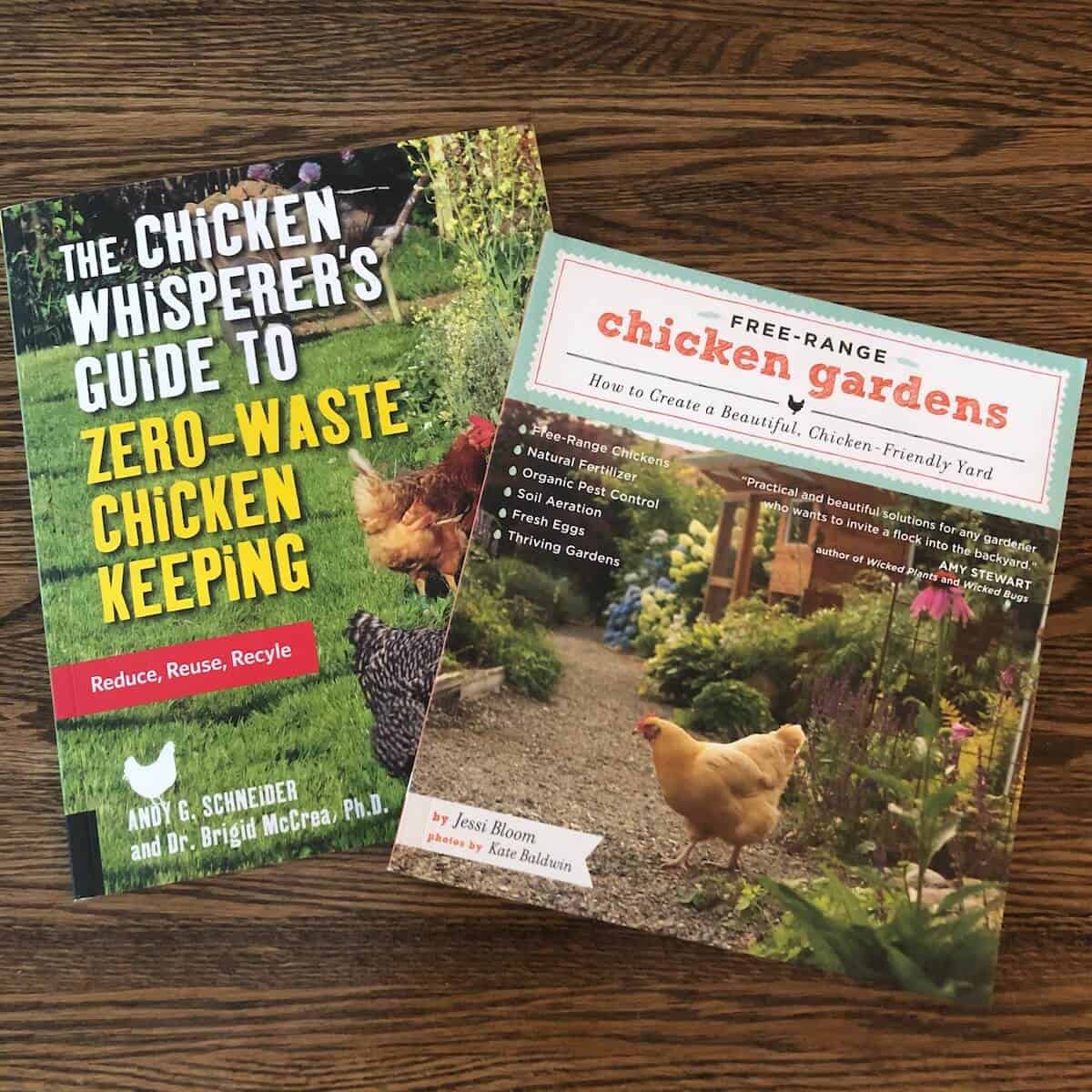How to Grow a Medicinal Herb Garden
If you are interested in herbal medicine, growing your own medicinal herbs is a great way to save money, while also learning more about the plants themselves. Build your own home apothecary by learning how to grow medicinal herbs.
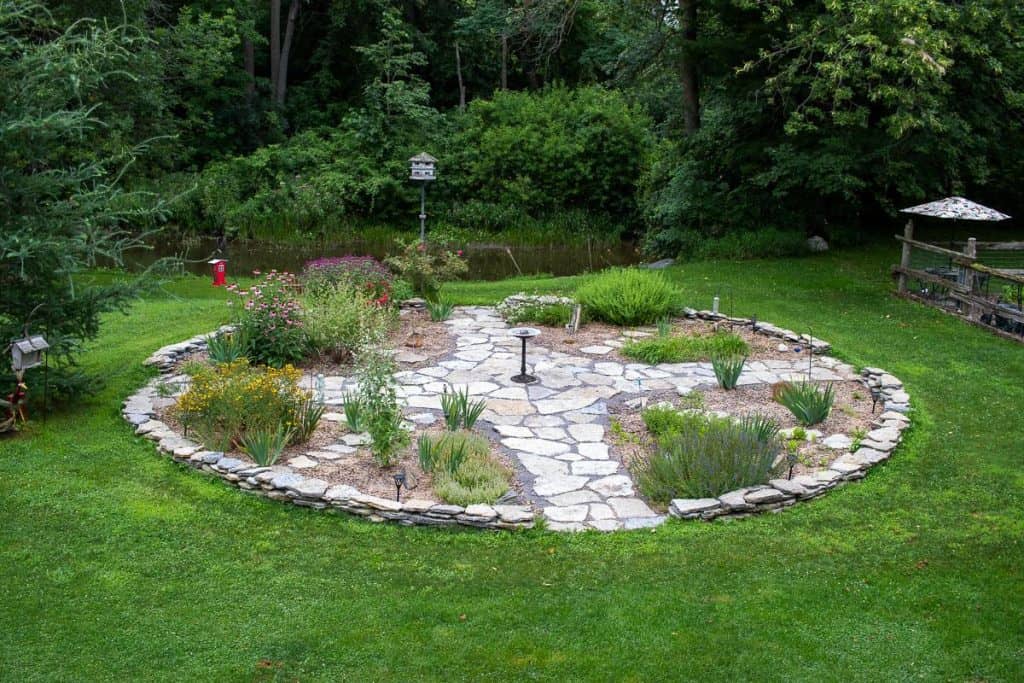
This post may contain affiliate links, which means if you make a purchase through one of these links, I make a small amount of commission at no extra cost to you. See full disclosure here.
Benefits of Growing Your Own Herbs
Many of us begin our journey into learning about herbal medicine, by buying herbal teas, or purchasing herbal skincare products or remedies. While this is a wonderful way to get acquainted with herbal products, it can become costly as you begin to use them more.
Growing your own medicinal herbs for teas, tinctures, and skincare products is a fantastic way to save money.
There is also no better teacher than experience. One of the best ways to learn more about the herbs themselves, is to actually fully experience them, from seed to final product. Learning how to plant, water, and tend to those herbs, will teach you just as much as any herbal book.
Growing your own herbs is more sustainable. You can just walk out in your back yard and harvest them as you need them. There is no need for packaging or shipping. When you make your own herbal products, you can re-use your jars and containers infinitely.
Gardening itself is a therapeutic practice. Spending time outdoors, tending to plants, putting your hands in the soil, all have health benefits.
Plan Your Location
Your first decision, will be where to place your medicinal herb garden. You don’t want to buy more plants than you have room for. You also don’t want to buy sun-loving herbs if your only garden spot is in the shade, or vice-versa.
Here are some factors to consider when choosing a location for her herb garden:
Permanent
Many medicinal herbs are perennial – meaning they will come back every year. Some are self-seeding, meaning that the plant itself is technically annual, but because it drops its seeds in the fall, those seeds will germinate in the spring and give you new plants.
What this means is, you’ll want to find a permanent location for your medicinal herb garden.
Don’t plant these herbs in an area where you like to rotate your gardens, such as your kitchen/veggie garden.
Full Sun
Most medicinal herbs are flowering herbs, so they like a lot of sun. Choose a spot in your yard that gets plenty of direct sun throughout the day.
(If you want to grow culinary herbs, many culinary herbs actually grow very well in the shade – so save your shadier spots for your culinary herbs).
Easy Access
You’ll want to keep your medicinal herbs close by – not only because they’re beautiful to look at, but because you’re far more likely to use them if you have easy access to them. When you feel like a cup of peppermint tea, you might not want to trek to the back corner of your property to snip a few sprigs. But if your garden is just a few steps from your kitchen, you’re much more likely to do so.
Convert a Flower Bed to a Medicinal Herb Garden
If you feel you don’t have a spot to start a new garden, take a look at where you might already have an existing flower bed. Medicinal plants are not only useful, they are also beautiful, and attract many pollinators and birds (the hummingbirds love my herb garden!).
If you’re not ready to rip out a flower bed, you can start by simply interplanting medicinal herbs with your existing flowers. Echinacea is a great example of an herb that is stunning in a flower bed.
I started my herbal medicine garden journey by replacing flowers with medicinal and culinary herbs. In time, the herbs I wanted to grow would take up more space than I had in that bed – so I left the culinary herbs there, and made a new bed for my medicinal herbs.
Herb Garden Layout
The layout of your medicinal garden can vary widely, depending on your circumstances, your space, and how much energy you want to devote to growing herbs.
There are many different ways to design an herb garden.
I had a fair amount of space available, so I chose to go with a Medicine Wheel design.
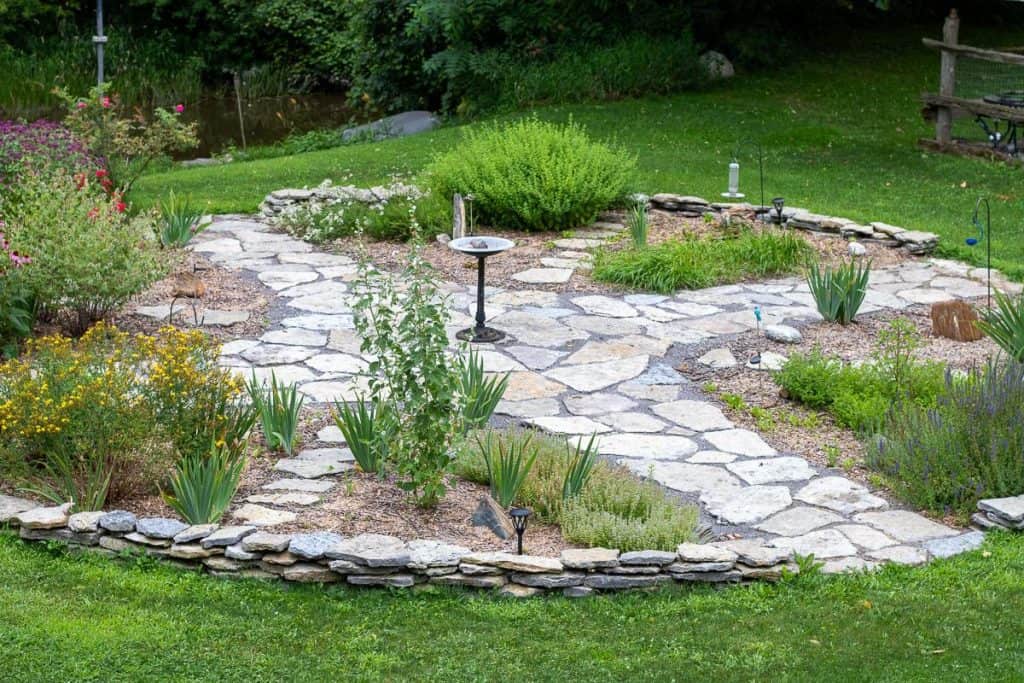
With a medicine wheel, you create paths that are oriented in the 4 cardinal directions: North, East, South, and West. And then you plant inside each of your quadrants.
I added an extra path in the centre of each quadrant, to make it feel more inviting to interact with the herbs.
There is also an herb spiral, which is great if you’re working with a small space.
Or, as I mentioned earlier, you can simply start adding medicinal plants to an existing flower bed.
There really are no rules when it comes to how to layout your herb garden!
Just remember that, since many of these herbs are perennial, they will get larger every year. Be sure to give them plenty of space to grow. Those tiny plants may not look like much when you put them in the ground, but they will get much larger!
You also don’t have to limit yourself to just one medicine garden. You can have medicinal herbs in multiple places!
Herbal Medicine Books
Herbal medicine books are a great way to familiarize yourself with various herbs. If you’re not sure which herbs you’d like to grow, browsing through books like these will help you choose herbs that you think would be the most beneficial for your family.
Here are some of my favorite books on herbal medicine.
Take Notes
As you browse books and the internet, take notes of what herbs you’ll need to make the recipes you want to make for your family. Take note of growing conditions, how easy or difficult they are to grow, and if they grow well in your area.
Native vs. Non-Native Herbs
Before buying seeds or plants, you may wish to familiarize yourself with what medicinal herbs are already growing in your backyard.
(When we first bought our property, I knew I wanted to grow Elderberry – so I immediately went out and bought 2 elderberry shrubs from the nursery – only to realize that we had an entire stand of native elderberries growing along our creek).
Medicine is all around us! You may simply be able to forage for the herbs you need. Here in Eastern Canada, things like plantain, yarrow, chicory, and dandelion grow right in our lawn. Once you discover these, you may simply be able to stop mowing an area of your lawn, and voila – you have medicinal herbs!
Some medicinal plants you may wish to grow will not be native to your area – meaning they have the potential to become invasive if they get out of hand.
Always be mindful of where you are planting non-native plants, to ensure they stay contained, and don’t become a nuisance.
Decide What Herbs to Grow
I always suggest people start with herbs they are already using, or buying at the store. Including tea bags! Do you buy a lot of chamomile tea? Peppermint tea? Do you purchase echinacea tinctures, or buy styptic powder for your chickens? (It took me way too long to realize that styptic powder is just dried, powdered yarrow!).
Start with the herbs you already use or are familiar with, and that grow well in your area. From there, you can expand, as you learn about new herbs you want to try.
Here are a few ideas for herbs you can grow in your backyard medicinal herb garden. This is, of course, not an exhaustive list! The list of herbs you can grow is almost endless. Just a few ideas to help get you started.
1. Calendula (Calendula officinales)
Skin health
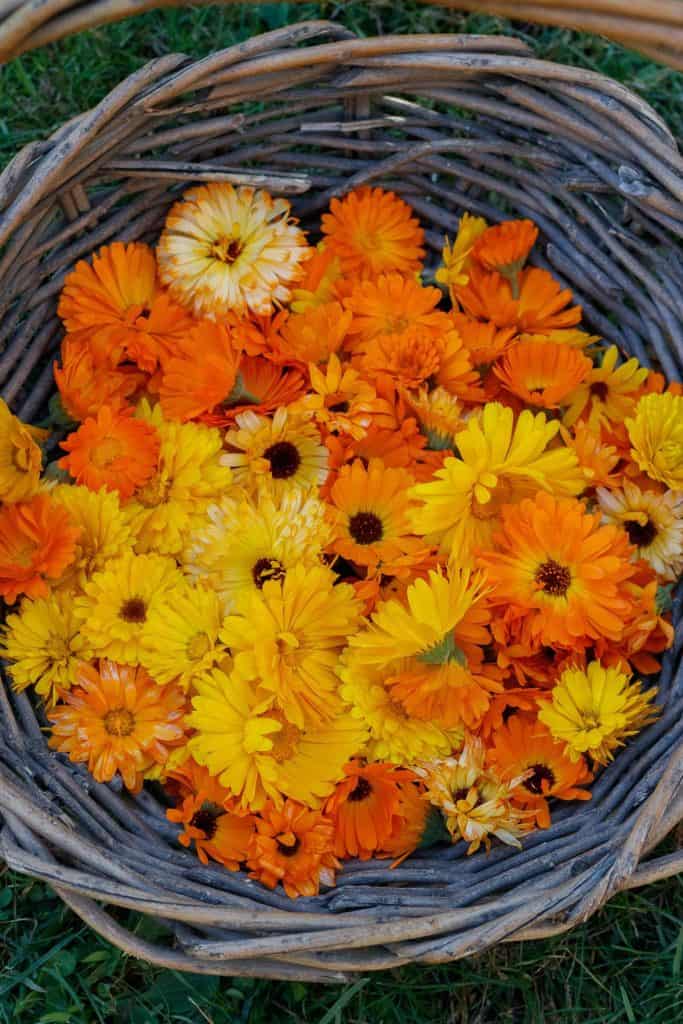
I had to put Calendula at the top, because not only is it an incredibly useful herb, but it is SO beautiful, and so easy to grow. It practically plants itself!
It readily self-seeds, so make sure you put it somewhere that you want it to come back every year – because you’ll have little baby calendula flowers popping up every spring.
Calendula is typically used topically, as it’s excellent for skin health. You can make an infused oil, a salve, lotion, or soap with your calendula.
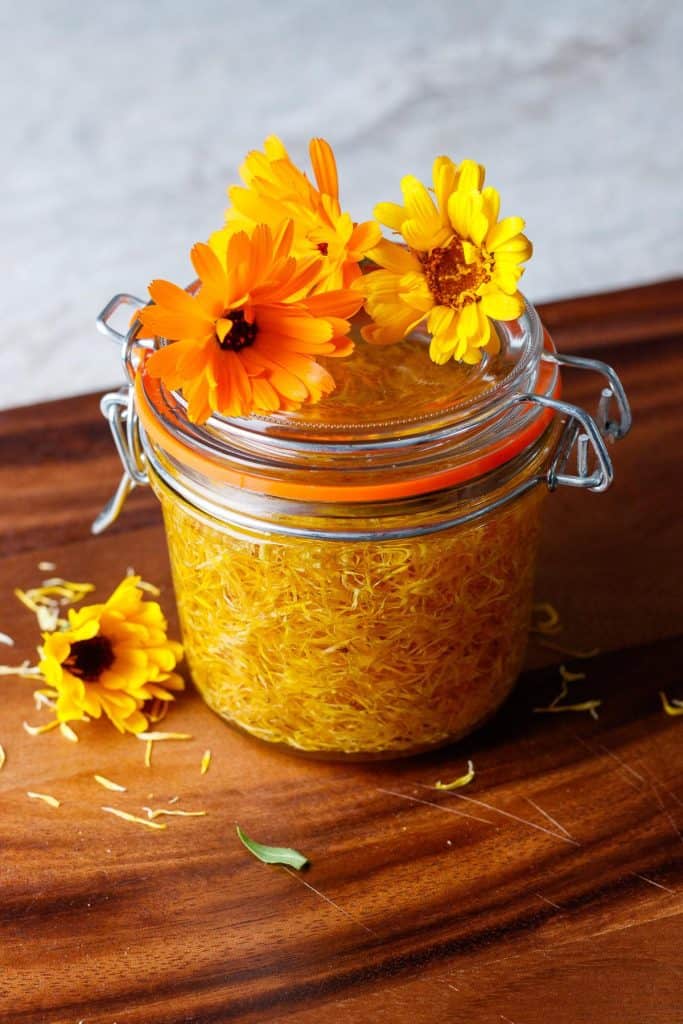
2. Chamomile (Matricaria recutita)
Sleep support
Chamomile is a wonderful staple to grow in your medicine garden. It makes a fantastic tea, helps soothe your digestive system, and is excellent for stress & sleep support.
The flavor always reminds me of apples.
Chamomile is easy to grow from seed – just sprinkle your chamomile seeds where you want them to grow, and lightly rake them into the soil. Keep them moist until they germinate. You can also start the seeds indoors a few weeks before your last frost date.
3. Peppermint (Mentha x piperita)
Digestive support
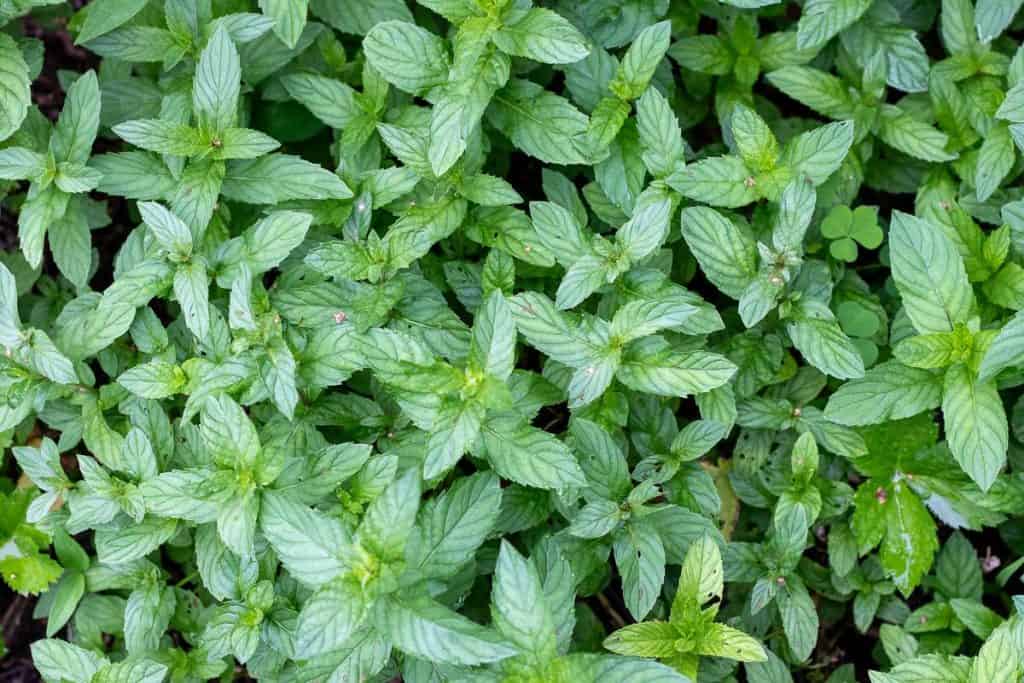
Peppermint is my go-to for digestive support. Its cooling action means it’s soothing on your digestive system. I drink peppermint tea almost daily!
It’s also incredibly easy to grow – almost too easy. This is one plant you’ll want to keep contained. You can plant it in pots, and sink the pots right into the ground. Or, simply find an area where you don’t mind if it spreads. We grow ours at the bottom of our deck stairs. If it starts to get unruly, my husband simply mows it down with the lawn mower. Then it comes back even stronger and healthier!
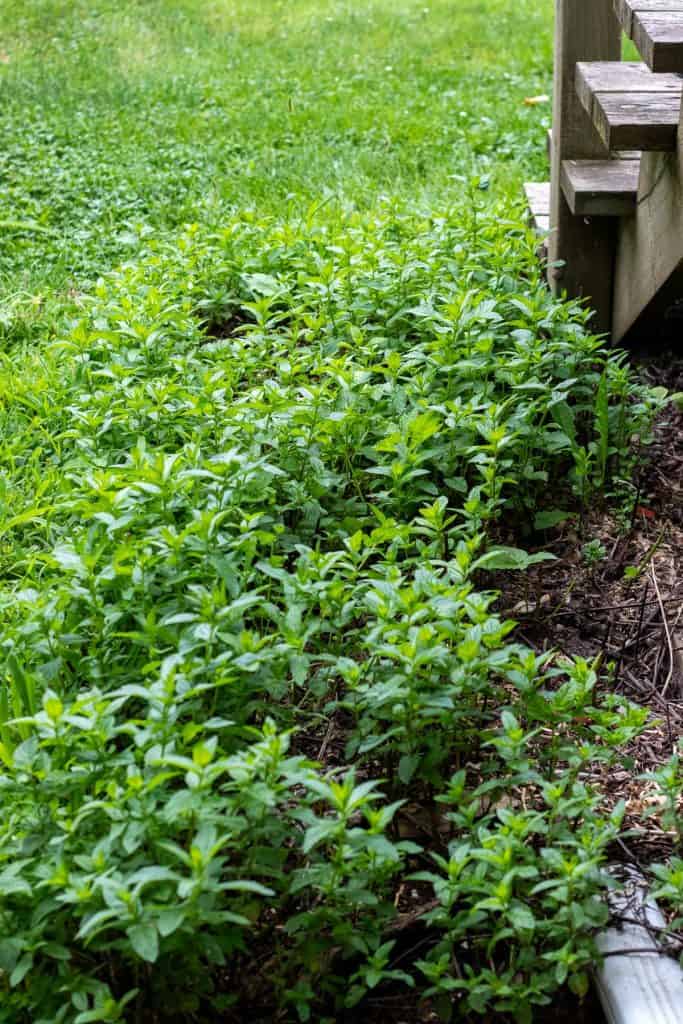
4. Lemon Balm (Melissa officinales)
Nervine (helps calm the nervous system)
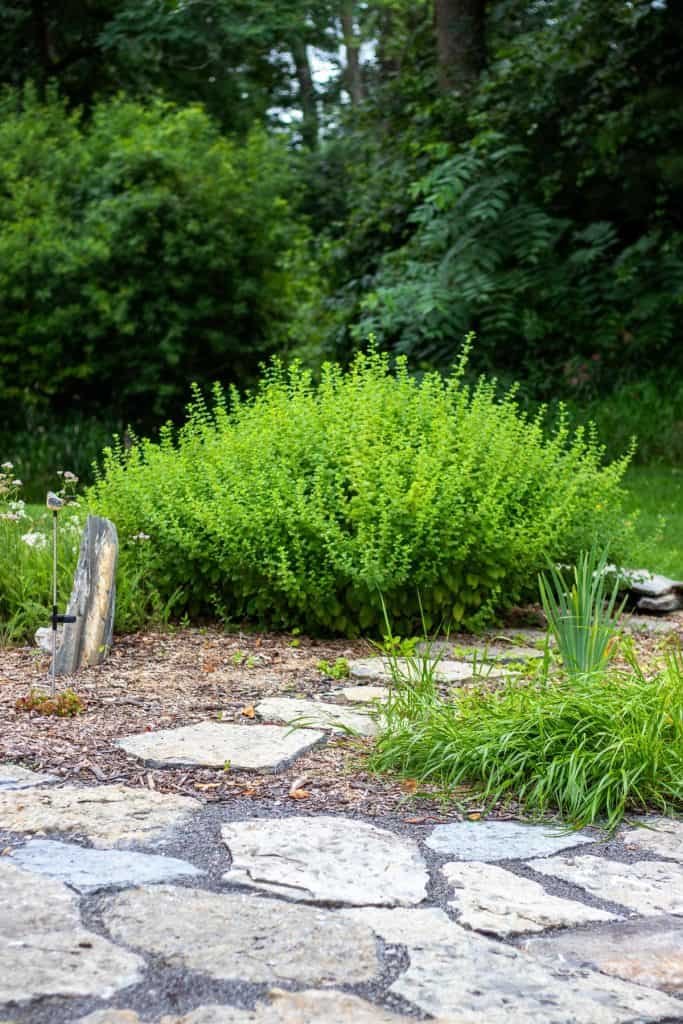
Lemon balm is in the mint family, and while it’s a little better behaved than peppermint, it will spread fairly quickly. I planted 3 lemon balm plants, because they seemed so tiny and cute, but quickly realized I only needed one!
Lemon balm (also known as Melissa), is incredibly calming to your nervous system. It has a lovely lemony flavor – I love to chew on leaves right from the garden. You can also rub it on your skin as a natural insect repellent.
5. Lavender (Lavandula angustifolia)
Nervine (helps calm the nervous system)
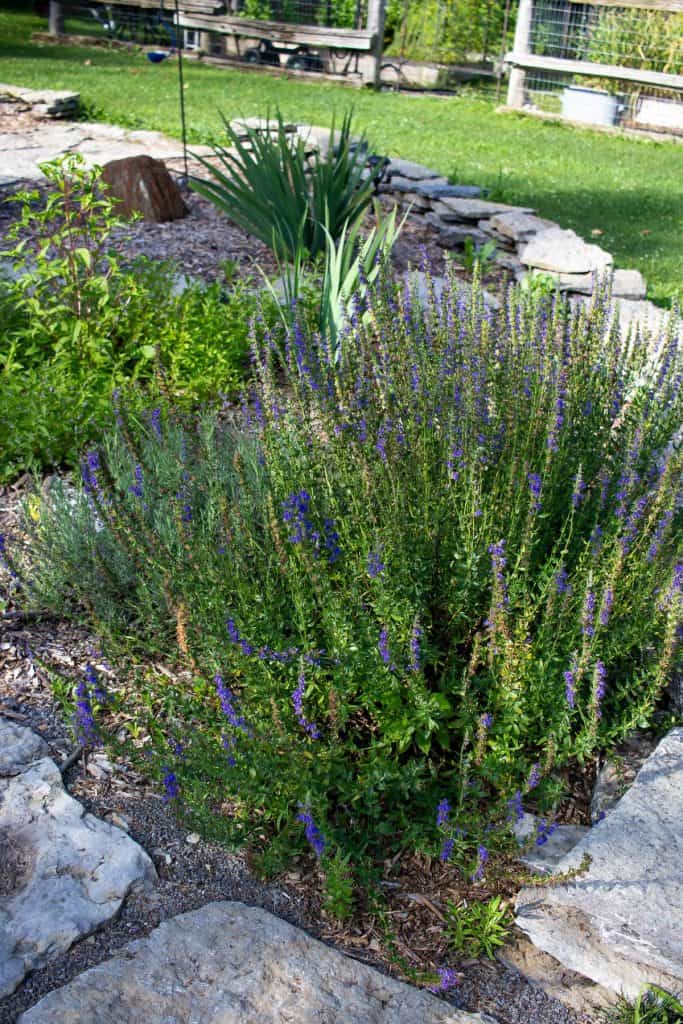
Lavender is an herb most people are very familiar with, but we tend to forget about its medicinal benefits. Lavender is my go-to essential oil for all things calming. The herb itself can be used the same way. Lavender is edible, so you can make a tea with it. You can also use it to make salves, lotions, or soap.
6. Echinacea (Echinacea angustifolia)
Immune support
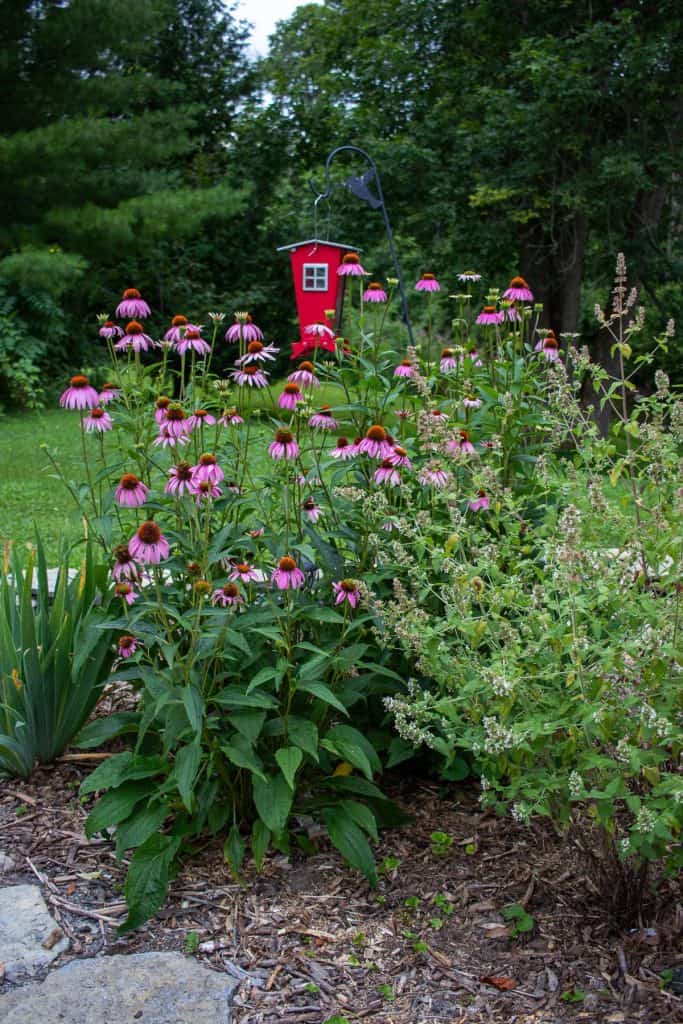
Echinacea is best known for its immune supporting properties. The root is typically what’s used – so you’ll want to let the plant grow and get established for a few years before harvesting. The root is typically harvested in fall, as that is when most of the plants energy returns to its roots. The butterflies and hummingbirds absolutely love this beautiful cone flower – seeing the pollinators in the garden has as many healing properties as the plant itself.
7. Yarrow (Achillea millefolium)
Anti-inflammatory
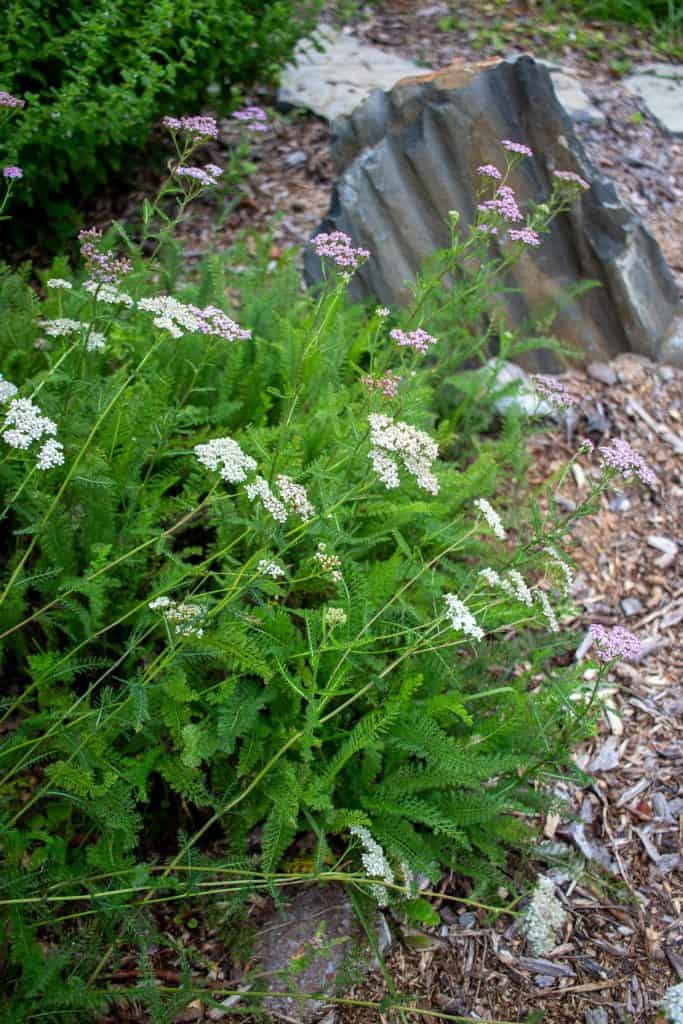
Yarrow is an excellent anti-inflammatory herb, and should be part of your natural first aid kit.
Yarrow is a styptic, meaning it can stop wounds from bleeding. We always kept styptic powder on hand in case one of our chickens had an injury (a simple broken nail can kill a chicken, if the bleeding isn’t stopped). I was purchasing it from Amazon until I realized it was just dried, powdered yarrow! It’s also great for your skin, and supports your liver.
8. Scullcap (Scutellaria)
Nervine
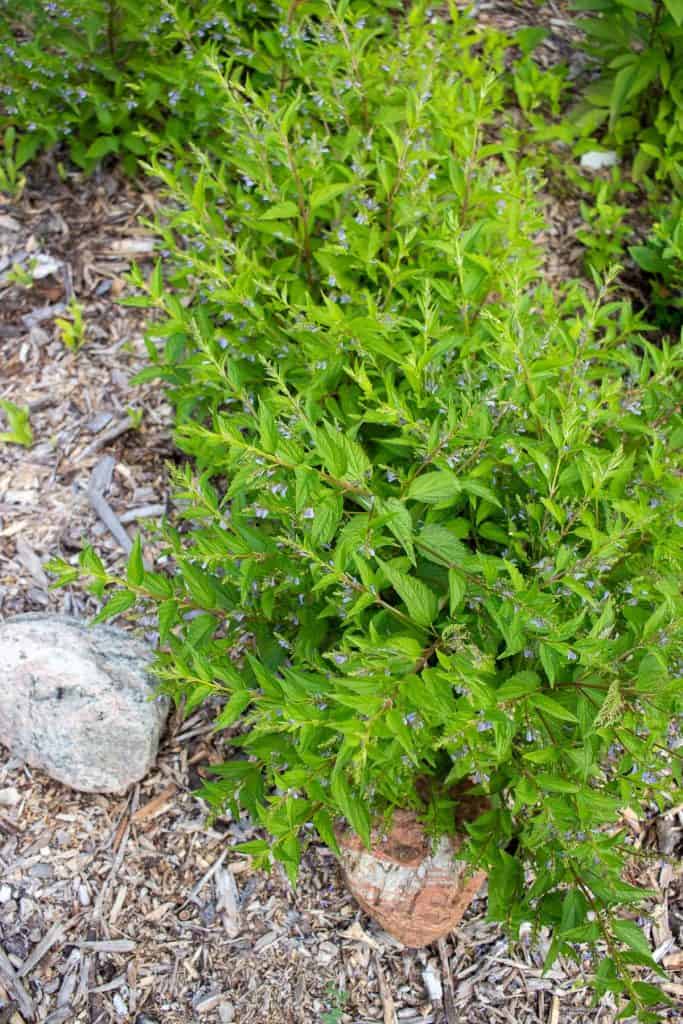
Scullcap (sometimes spelled skullcap) is part of the mint family, so it’s very easy to grow. It produces pretty purple flowers.
Scullcap is traditionally used to help calm the nervous system. It helps to relieve tension, nervousness, and irritability.
9. Tulsi (Ocimum sanctum)
Adaptogen
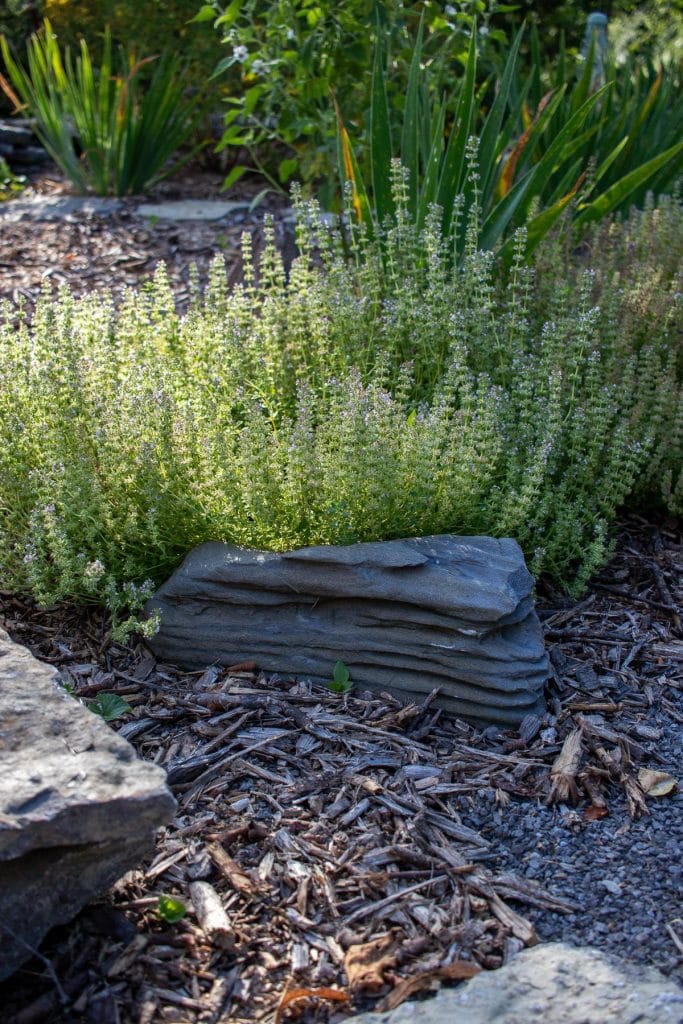
Also known as Holy Basil, this herb is very soothing to the nervous system. You can add the fresh herbs to your meals, or you can dry the leaves to use as a medicinal tea in the winter.
Consuming Tulsi tea daily can help regulate your cortisol and blood sugar levels.
Holy Basil can be direct sown after your last frost date, or you can start the seeds indoors in late winter, and transplant once the soil has warmed.
10. Bee Balm (Monarda fistulosa)
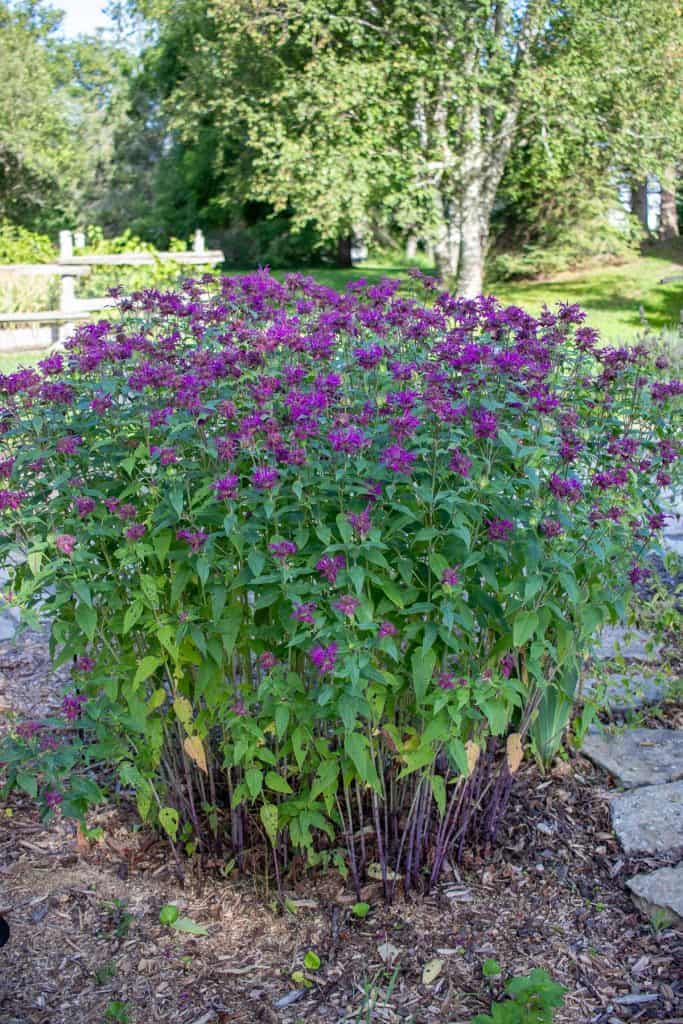
Bee balm, another mint family member, comes in a few different shades. It grows and spreads easily, and will add a lovely pop of colour to your herb garden. The hummingbirds love it!
Bee balm (also known as wild bergamot), can be used externally to treat bug bites, stings, and rashes.
When used as a tea, bee balm has a soothing effect on the digestive system, and a calming effect on the nervous system.
Seeds vs. Plants
Should you grow your medicinal herbs from seeds or plants?
Some medicinal herbs, like calendula and chamomile, are extremely easy to grow from seed, and can be direct-sown right in your garden.
Others, like lavender, can be a little trickier to grow from seed. It can also be slow growing.
Many medicinal herbs require cold stratification in order to germinate – meaning they need to experience the freeze/thaw cycle like they would in nature. This can make starting herbs from seed a little trickier.
Since most herbs will spread and grow larger each year, you will likely find you only need one of each to get started – in which case, it likely makes more sense to just buy the plants. (There is no sense buying an entire packet of seeds, if you only need one plant!).
Starting seeds yourself can be fun, but can also be frustrating if you don’t have a lot of experience with seed starting, and your seeds don’t germinate for some reason.
I always say, you’re not less of a gardener if you buy your plants! Having them in your backyard and accessible is the only thing that matters.
I buy all my herb seeds and plants from Richter’s Herbs.
How to Learn More about Medicinal Herbs
There are plenty of resources all over the internet to learn about medicinal herbs. But if you would prefer more structured learning, taking an herbal course can be a great option! I love the Wild Rose College of Herbal Medicine.
They have some free courses available, including one about how to grow an urban medicine garden, and one on the Top 10 herbs to grow, and it includes a free eBook!










